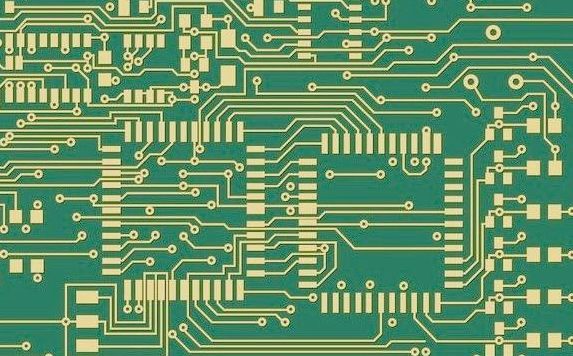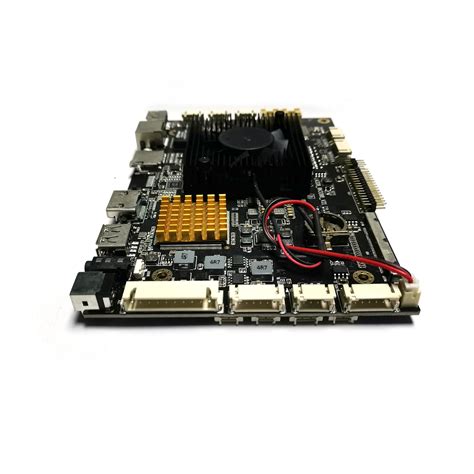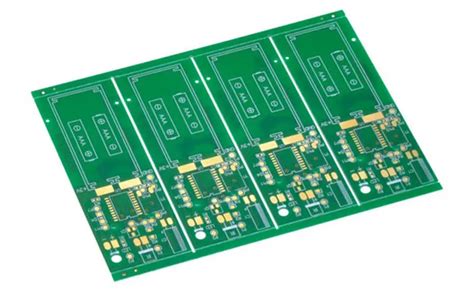Soldering heavy copper pcb
Techniques For Soldering Heavy Copper PCBs
Soldering heavy copper printed circuit boards (PCBs) presents unique challenges that require specialized techniques to ensure reliable and effective connections.
Heavy copper PCBs, characterized by their thick copper layers, are commonly used in applications demanding high current and enhanced thermal management.
Consequently, the soldering process must be meticulously managed to accommodate the increased thermal mass and ensure robust joints.
To begin with, the choice of soldering equipment is paramount.
Standard soldering irons may not provide sufficient heat to effectively solder heavy copper PCBs. Therefore, high-power soldering irons or reflow soldering systems are recommended. These tools can deliver the necessary thermal energy to heat the copper layers adequately, ensuring proper solder flow and adhesion. Additionally, the use of temperature-controlled soldering stations can help maintain consistent heat levels, preventing thermal shock and potential damage to the PCB components.
Preheating the PCB is another critical step in the soldering process.
Given the substantial thermal mass of heavy copper PCBs, preheating helps to reduce the thermal gradient between the soldering iron and the board. This practice minimizes the risk of thermal stress and ensures a more uniform temperature distribution across the PCB. Preheating can be achieved using a dedicated preheating station or an oven, with temperatures typically set between 100°C and 150°C, depending on the specific requirements of the PCB and components.
Flux application is equally important in the soldering of heavy copper PCBs.
Flux serves to clean the surfaces to be soldered, removing oxides and contaminants that could impede solder flow. For heavy copper PCBs, a high-activity flux is often necessary to ensure effective cleaning and wetting of the thick copper layers. Careful application of flux, either through brushing or dispensing, ensures that it reaches all necessary areas, promoting strong and reliable solder joints.
When it comes to the actual soldering process, the choice of solder alloy can significantly impact the quality of the joints.
Lead-free solders, such as those based on tin-silver-copper (SAC) alloys, are commonly used due to their environmental benefits and compliance with regulations. However, these solders typically have higher melting points compared to traditional lead-based solders, necessitating precise temperature control during the soldering process. Ensuring that the soldering iron or reflow oven reaches and maintains the appropriate temperature is crucial for achieving optimal solder flow and joint formation.
Furthermore, the soldering technique itself must be adapted to the characteristics of heavy copper PCBs.
For instance, using a drag soldering method can be effective for components with multiple leads, as it allows for simultaneous soldering of several connections. Additionally, employing a soldering tip with a larger surface area can help transfer heat more efficiently to the thick copper layers, facilitating better solder flow and adhesion.
Post-soldering inspection is an essential step to verify the integrity of the solder joints.
Visual inspection, often supplemented by magnification tools, can help identify any defects such as cold joints, insufficient solder coverage, or bridging. In some cases, X-ray inspection may be necessary to assess the quality of solder joints in multilayer PCBs or areas that are not easily accessible.
In conclusion, soldering heavy copper PCBs requires a combination of appropriate equipment, preheating, flux application, careful selection of solder alloys, and adapted soldering techniques. By meticulously managing each of these aspects, it is possible to achieve reliable and robust solder joints, ensuring the optimal performance and longevity of the PCB in demanding applications.

Essential Tools For Soldering Heavy Copper PCBs
Soldering heavy copper PCBs requires a specialized set of tools to ensure precision and reliability. The process is more demanding than standard PCB soldering due to the increased thermal mass and the need for higher temperatures. Therefore, having the right tools is essential for achieving optimal results.
First and foremost, a high-power soldering iron is indispensable. Standard soldering irons typically lack the necessary power to heat heavy copper traces adequately.
A soldering iron with adjustable temperature control and a power rating of at least 80 watts is recommended. This allows for precise temperature management, which is crucial for preventing damage to the PCB and components. Additionally, a soldering station with a digital display can provide real-time feedback, ensuring that the temperature remains consistent throughout the soldering process.
Equally important is the choice of solder. For heavy copper PCBs, a solder with a higher melting point is often required.
Lead-free solder, such as SAC305 (composed of tin, silver, and copper), is commonly used due to its higher melting point and environmental benefits. However, it is essential to ensure that the solder has good wetting properties to facilitate a strong bond between the components and the PCB.
Flux is another critical component in the soldering process.
It helps to clean the surfaces to be soldered, removing any oxides and contaminants that could impede the formation of a good solder joint. For heavy copper PCBs, a high-activity flux is recommended. This type of flux is more aggressive in cleaning and can handle the higher temperatures required for soldering heavy copper. It is available in various forms, including liquid, paste, and flux-cored solder wire.
A preheating tool is also beneficial when working with heavy copper PCBs.
Preheating the PCB helps to reduce thermal shock and ensures that the entire board reaches a uniform temperature. This can prevent warping and other thermal damage. Preheating can be achieved using a dedicated preheating station or a hot air rework station. The latter can also be used for reflow soldering, making it a versatile addition to the toolkit.
In addition to these primary tools, several auxiliary tools can enhance the soldering process.
A good quality soldering mat or work surface is essential to protect the workspace and provide a stable platform for soldering. Tweezers and precision pliers are useful for handling small components and making fine adjustments. A desoldering pump or braid can be invaluable for correcting mistakes and removing excess solder.
Safety equipment should not be overlooked. Soldering can produce fumes that are harmful if inhaled.
Therefore, a fume extractor or a well-ventilated workspace is necessary to ensure a safe working environment. Protective eyewear and heat-resistant gloves can also provide additional safety during the soldering process.
In conclusion, soldering heavy copper PCBs demands a comprehensive set of specialized tools to manage the increased thermal requirements and ensure high-quality results. A high-power soldering iron, appropriate solder and flux, preheating tools, and various auxiliary tools are all essential components of a well-equipped soldering toolkit. By investing in these tools and adhering to best practices, one can achieve reliable and durable solder joints on heavy copper PCBs, ensuring the longevity and performance of the final product.

Common Challenges In Soldering Heavy Copper PCBs
Soldering heavy copper printed circuit boards (PCBs) presents a unique set of challenges that can significantly impact the quality and reliability of the final product.
One of the primary difficulties arises from the thermal management issues associated with heavy copper layers.
These layers, often exceeding 3 ounces per square foot, have a high thermal mass, which means they can absorb and dissipate heat rapidly. Consequently, achieving the correct soldering temperature becomes a complex task. If the temperature is too low, the solder may not melt properly, leading to weak joints. Conversely, if the temperature is too high, there is a risk of damaging the components or the PCB itself.
Another challenge is the increased difficulty in achieving uniform heat distribution.
Heavy copper PCBs require more heat to reach the soldering temperature, and this can lead to uneven heating. Uneven heating can cause thermal stress, which may result in warping or delamination of the PCB. To mitigate this, preheating the PCB is often recommended. Preheating helps to bring the entire board to a uniform temperature, reducing the thermal gradient and minimizing the risk of damage. However, this adds an extra step to the process, increasing both time and cost.
The choice of soldering equipment also plays a crucial role in addressing these challenges.
Traditional soldering irons may not provide sufficient heat for heavy copper PCBs, necessitating the use of more advanced equipment such as hot air rework stations or infrared soldering systems. These systems can deliver the required heat more effectively, but they also come with a higher price tag. Additionally, the use of specialized soldering tips designed for heavy copper can improve heat transfer and make the process more efficient.
Flux selection is another critical factor.
Heavy copper PCBs often require more aggressive fluxes to ensure proper wetting and adhesion of the solder. However, aggressive fluxes can leave behind residues that are difficult to clean and may cause long-term reliability issues if not properly removed. Therefore, it is essential to choose a flux that balances activity with ease of cleaning. Water-soluble fluxes are often preferred for heavy copper applications, as they can be easily removed with water, reducing the risk of residue-related problems.
Component placement and solder joint inspection also become more challenging with heavy copper PCBs.
The increased thickness of the copper layers can make it difficult to achieve good solder flow, leading to potential issues with solder joint integrity. Automated optical inspection (AOI) systems can be used to verify the quality of solder joints, but these systems must be calibrated to account for the unique characteristics of heavy copper PCBs. Manual inspection may also be necessary, particularly for critical joints, adding another layer of complexity to the process.
In conclusion, soldering heavy copper PCBs involves a range of challenges that require careful consideration and specialized techniques. From thermal management and equipment selection to flux choice and inspection methods, each aspect of the process must be meticulously planned and executed to ensure the reliability and performance of the final product. By understanding and addressing these challenges, manufacturers can achieve high-quality solder joints and produce robust, reliable PCBs capable of meeting the demands of modern electronic applications.

Best Practices For Soldering Heavy Copper PCBs
Soldering heavy copper PCBs requires a meticulous approach to ensure optimal performance and reliability. Heavy copper PCBs, characterized by their thick copper layers, are commonly used in applications demanding high current and enhanced thermal management. To achieve successful soldering, it is essential to adhere to best practices that address the unique challenges posed by these robust circuit boards.
First and foremost, selecting the appropriate soldering materials is crucial.
Heavy copper PCBs necessitate the use of high-quality solder alloys with a higher melting point to accommodate the increased thermal mass. Lead-free solder, such as SAC305 (Tin-Silver-Copper), is often preferred due to its environmental benefits and superior mechanical properties. Additionally, flux selection plays a pivotal role in ensuring proper wetting and adhesion. A flux with strong activation properties is recommended to effectively remove oxides and promote solder flow.
Temperature control is another critical factor in soldering heavy copper PCBs.
The substantial copper thickness can act as a heat sink, dissipating heat rapidly and making it challenging to achieve the necessary soldering temperature. Therefore, employing a soldering iron or reflow oven with precise temperature control is imperative. Preheating the PCB can also mitigate thermal shock and ensure uniform heat distribution. This step is particularly important for multilayer boards, where inner layers may require additional heat to reach the desired temperature.
Furthermore, the soldering process itself demands careful attention.
When using a soldering iron, it is advisable to use a tip with a larger surface area to facilitate efficient heat transfer. Applying the soldering iron tip to both the pad and the component lead simultaneously ensures even heating and proper solder flow. In the case of reflow soldering, a well-defined thermal profile is essential. The profile should include a preheat stage, a soak stage, and a reflow stage, followed by a controlled cooling phase to prevent thermal stress and potential damage to the PCB.
In addition to temperature considerations, the physical handling of heavy copper PCBs warrants special care.
The increased weight and rigidity of these boards can make them more susceptible to mechanical stress during soldering. Utilizing proper support fixtures and handling tools can prevent warping and misalignment. It is also advisable to avoid excessive force when placing components, as this can lead to solder joint defects and compromised electrical connections.
Post-soldering inspection is a vital step to ensure the integrity of the solder joints.
Visual inspection, aided by magnification tools, can help identify common issues such as cold solder joints, bridging, and insufficient wetting. For more critical applications, advanced inspection techniques like X-ray imaging and automated optical inspection (AOI) can provide a comprehensive assessment of solder joint quality. These methods can detect hidden defects and ensure compliance with industry standards.
Finally, proper cleaning and maintenance of soldering equipment are essential to sustain consistent performance.
Residual flux and solder splatter can accumulate on soldering iron tips and reflow oven surfaces, affecting heat transfer and soldering quality. Regular cleaning and calibration of equipment help maintain optimal functionality and prolong the lifespan of soldering tools.
In conclusion, soldering heavy copper PCBs demands a thorough understanding of the materials, temperature control, handling techniques, and inspection methods. By adhering to these best practices, one can achieve reliable and high-quality solder joints, ensuring the longevity and performance of heavy copper PCBs in demanding applications.





